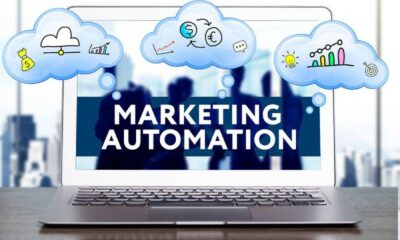Health
A Look at How Technology Is Transforming Medical Care

Recent technological advances are reshaping the way healthcare is delivered, managed, and experienced. From innovative software solutions to cloud-based platforms, technological advancements are driving unprecedented improvements in patient outcomes, operational efficiency, and access to care. Integrating new technologies into medical research, biotechnology, and healthcare can improve efficiency and reduce errors.
Enterprise Resource Planning (ERP) Software for Biotechnology Companies
Biotechnology companies are at the forefront of medical innovation, developing life-saving therapies and cutting-edge treatments. However, managing the complex processes involved in biotech research, development, and production can be challenging. Biotech ERP software can streamline operations and enhance efficiency for biotech companies.
ERP software integrates core business functions such as inventory management, manufacturing, finance, and regulatory compliance into a centralized platform. This platform gives professionals real-time visibility and control over operations. For biotech companies, this means improved resource allocation, reduced costs, and faster time-to-market for new therapies. By automating routine tasks and providing actionable insights, ERP software enables biotech firms to optimize their processes and focus on innovation. ERP systems tailored for the biotech industry offer specialized features such as batch tracking, quality control, and regulatory reporting. These features ensure compliance with strict regulatory standards.
Cloud-Based Technology in Healthcare
Cloud-based technology provides flexible, scalable, and cost-effective solutions for storing, managing, and sharing medical data. With the increasing digitization of health records and the growing demand for remote access to healthcare services, cloud-based platforms offer a range of benefits for patients, providers, and healthcare organizations.
For patients, cloud-based technology enables seamless access to their medical records and health information from anywhere, at any time. This software empowers patients to take a more active role in managing their health. It enables better communication and coordination with their healthcare providers. Cloud-based telehealth platforms allow patients to access virtual consultations and remote monitoring services. This software improves access to care, particularly for those in rural or underserved areas.
For healthcare providers and organizations, cloud-based technology streamlines administrative tasks enhances collaboration, and improves the delivery of care. Electronic Health Record (EHR) systems hosted on cloud platforms provide a centralized repository for patient data, enabling providers to access up-to-date information and make more informed clinical decisions. Cloud-based telemedicine platforms facilitate virtual consultations, remote monitoring, and telehealth services, enabling providers to deliver care to patients wherever they are, improving efficiency and patient satisfaction. Cloud-based technology offers scalability, flexibility, and cost savings compared to traditional on-premises IT infrastructure. These solutions eliminate the need for costly hardware investments and maintenance. Healthcare organizations can scale their IT resources as needed and focus on delivering quality care. These platforms provide robust security and compliance features to protect patient data and ensure regulatory compliance, mitigating the risk of data breaches and unauthorized access.
Solutions for Pharmacy Supply Chain Management
Effective supply chain management ensures the availability of medications and medical supplies. For pharmacies, timely access to pharmaceuticals is essential for patient care. Technology plays a vital role in optimizing pharmacy supply chain management processes. This software ensures efficiency, accuracy, and patient safety. One of the key technologies transforming pharmacy supply chain management is inventory management software. These systems utilize advanced algorithms and data analytics to optimize inventory levels, track stock movements in real-time, and automate ordering processes.
By providing accurate demand forecasting and inventory optimization, inventory management software helps pharmacies reduce excess inventory and ensure timely replenishment of medications. Barcoding and RFID tags allow pharmacists to track individual medication units as they move through the supply chain, from manufacturer to distributor to pharmacy shelves. Pharmacies can verify product authenticity, monitor expiration dates, and prevent counterfeit medications from entering the supply chain. Predictive analytics and machine learning algorithms can forecast medication demand and optimize inventory levels.
Conclusion
Technological advancements are driving unprecedented improvements in all areas of the medical field. These innovations hold immense promise for improving health outcomes and enhancing the overall patient experience. New technologies also can make medical research more efficient. Technology plays a pivotal role in transforming pharmacy supply chain management. Medical professionals who want to meet the changing demands of the industry will need to embrace these technologies.
-

 Business4 weeks ago
Business4 weeks agoHow to fill MSME Form 1? Step-by-Step Guide
-
Business4 weeks ago
From Marine to Chief: The Leadership Journey of Sean Mannix
-

 Gadget4 weeks ago
Gadget4 weeks agoAfter Grand Success on BLDC Ceiling Fan, Eff4 Is Launching Smart Bulb
-

 Festivals & Events4 weeks ago
Festivals & Events4 weeks agoGoogle Celebrates Cherry Blossom Season with Animated Doodle
-

 Business2 weeks ago
Business2 weeks agoPrakash and Kamal Hinduja: Driving Social and Environmental Change
-
Education3 weeks ago
Fred DuVal: University Leadership as a Critical Resource for Climate Change Research and Life-Saving Solutions
-

 Sports4 weeks ago
Sports4 weeks ago2025 NASCAR Craftsman Truck Series Baptist Health 200 at Homestead-Miami Speedway: Race Preview, Prediction, Schedule, Entry List, Drivers to Watch and How to Watch
-

 Health2 weeks ago
Health2 weeks agoThe Hinduja Brothers Commitment to Global Health: Empowering Communities Across Borders
























